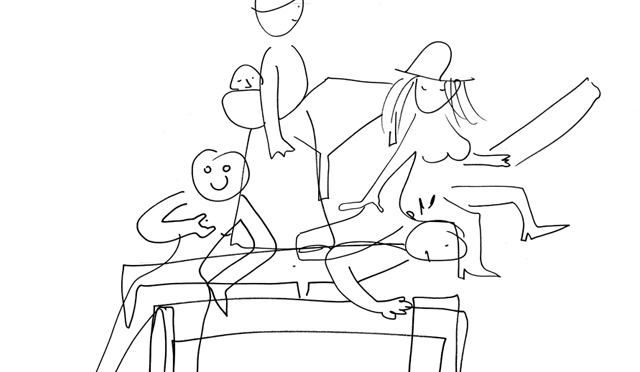Search
To search for an exact match, type the word or phrase you want in quotation marks.
A*DESK has been offering since 2002 contents about criticism and contemporary art. A*DESK has become consolidated thanks to all those who have believed in the project, all those who have followed us, debating, participating and collaborating. Many people have collaborated with A*DESK, and continue to do so. Their efforts, knowledge and belief in the project are what make it grow internationally. At A*DESK we have also generated work for over one hundred professionals in culture, from small collaborations with reviews and classes, to more prolonged and intense collaborations.
At A*DESK we believe in the need for free and universal access to culture and knowledge. We want to carry on being independent, remaining open to more ideas and opinions. If you believe in A*DESK, we need your backing to be able to continue. You can now participate in the project by supporting it. You can choose how much you want to contribute to the project.
You can decide how much you want to bring to the project.

In A*DESK we have always thought that from art, it is possible to write about everything. Even if it might seem banal, those argument may make it possible to provide details for a more complex interpretation of the world in which we live. Cupcakes could be a good example. What would have Adolf Loos or Roland Barthes written about cupcakes? Can be these decorated muffins the icing of a (Western) modernity characterized by consumerism and advertising void? Peio Aguirre writes about all this in this article, published on January 26, 2013, that we get back today from A*DESK’s archive.
We have no idea what two everyday aesthetes, such as Adolf Loos or Roland Barthes, if they’d lived in our “interesting times”, would have said about this recent fashion of obsolescent consumerism, namely these decorated fairy cakes or muffins also known as cupcakes. No doubt both of them would have had something to say about it; the first could have quite calmly called upon his violent anti-ornamental arsenal, driven to despair by the gratuitous, decorative fantasy of these fairy cakes, while the second might have referred to the displacement of habits and customs in the West. Lacking both reflections, we are only left to study the phenomenon, without a morsel of guilt. Cupcakes are these colourful, decorated fairy cakes that are beginning to appear in overcrowded, highly commercial, urban centres, where their mere their aroma already denotes an immediate gentrification of the zone; their presence can also be traced in advertising, in blogs and even specialised workshops. Their appearance is inoffensive; cute, little fairy cakes wrapped in a paper casing with glazed colour icing and an excess of creativity. They seem to be Anglo-Saxon in origin. Having nothing against their taste (sponge and fairy cakes always move within a more or less agreeable taste range) what makes them really detestable is their gratuitous iconicity that simply extolls the vacuity of consumerism and advertising.
A Cupcake would be like a postmodern sweet of the old fashioned kind, a designed object that signifies for today’s fashion and style what in the domain of architecture was pastiche (Jencks), the return to decoration and ornament (Venturi), or even kitsch (Graves). From an artistic point and cinematographic point of view there are also referents; Warhol would no doubt have used it or maybe one would have to look at the peak of post-modern irony such as Marie Antoinette (2006) by Sofia Coppola to find a more contemporary appropriation? Remember the scene where, to the rhythm of “I Want Candy” by Bow Wow Wow, a colourful orgy of shoes and cakes takes place. But maybe the current emergence of the cupcake, in itself an indicator of the retro fashion that is so in vogue, would seem to indicate not a stylistic return so much as a change in consumer habits, whereby global franchises such as Starbucks or Costa’s no longer offer any attraction to a new class of young experts with authentic radars for detecting the hip, the new-old and the semiotics of a more sophisticated style. This consumer is the hipster, and they are legion. In the same way that a hipster moustache is worn ironically, cupcakes are equally ironic “products”, their ornamental excess serving solely as a form of gratuitous retro-alimented creativity, with no other aspiration than perpetual consumerism.

A*DESK is a critical platform focused on publishing, training, experimentation, communication and dissemination in relation to contemporary culture and art, which is defined by transversality. The starting point is contemporary art, because that is where we come from and this awareness allows us to go much further, to incorporate other disciplines and forms of thought in order debate issues that are relevant and urgent for understanding our present.
"A desk is a dangerous place from which to watch the world" (John Le Carré)